Written by: David, TechFlow
Now, if you open the on-chain data of x402, you will see an interesting phenomenon: all of them are labeled with the blue Base logo.
Tens of thousands of transactions in the past 24 hours all occurred on Base. There was no Ethereum mainnet, and no BSC or Solana were involved.
This is normal, since x402 is a protocol proposed by Coinbase, so naturally it needs to run on its own Base chain first. Previously, the price of $PING surged, and various similar copycat schemes emerged. Base, leveraging this trump card, saw its daily active users and attention skyrocket.
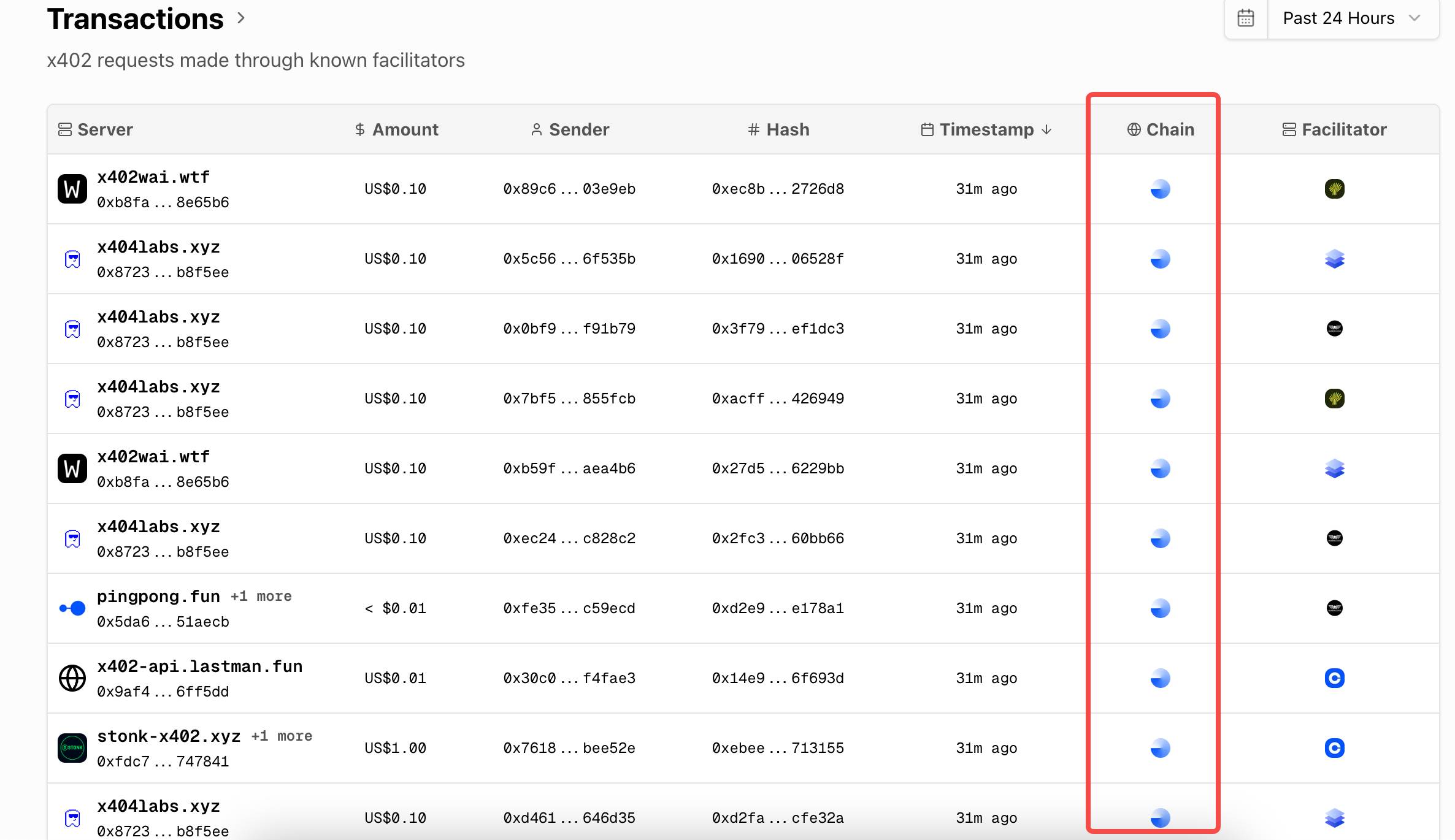
However, is the x402 only playable on Base?
From a technical perspective, the core of x402 is the HTTP 402 status code combined with on-chain stablecoin payments. Simply put, any chain that can run smart contracts, has low gas fees, and provides stablecoin liquidity can do it.
(If you are unfamiliar with the technology of x402 and its accompanying protocols, please refer to: x402 is gradually becoming more competitive, explore new asset opportunities in ERC-8004 in advance )
The reason x402 is only on Coinbase is not due to technical limitations, but rather Coinbase's home-field advantage. However, the technology is open source, and the protocol can be forked, which means other chains still have opportunities.
There is currently an interesting situation in the x402 narrative:
The two chains with core technical standards (Ethereum and Base) hold ERC-8004 and x402 respectively, but lack hype and liquidity; while the two most popular chains (BNB Chain and Solana) lack relevant technical legitimacy and projects.
Therefore, in the context of uneven development, absence is sometimes not a bad thing; on the contrary, it provides room for the development of new projects.
We've reviewed the x402 projects related to BNB Chain and Solana in the current market to help you better identify assets in this narrative.
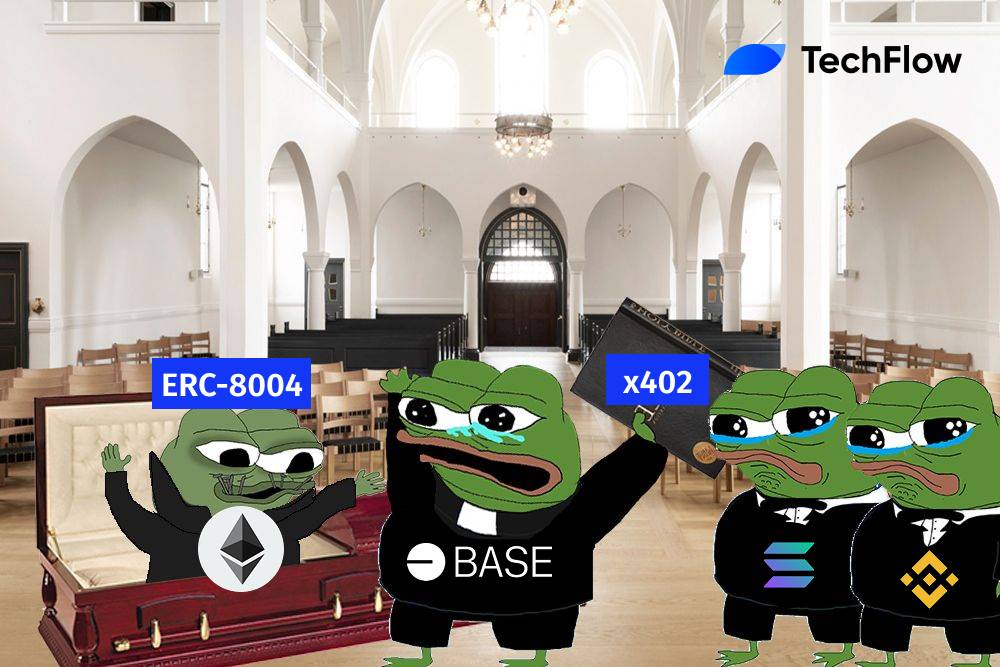
BNB Chain Ecosystem Project Review
BNB Chain's previous actions on Perp DEX and meme launches were remarkable, and assets like $Aster and $Binance Life emerged; now that x402 has arrived, the entire chain ecosystem seems too calm.
But from infrastructure to applications, some projects are quietly being conceived and built.
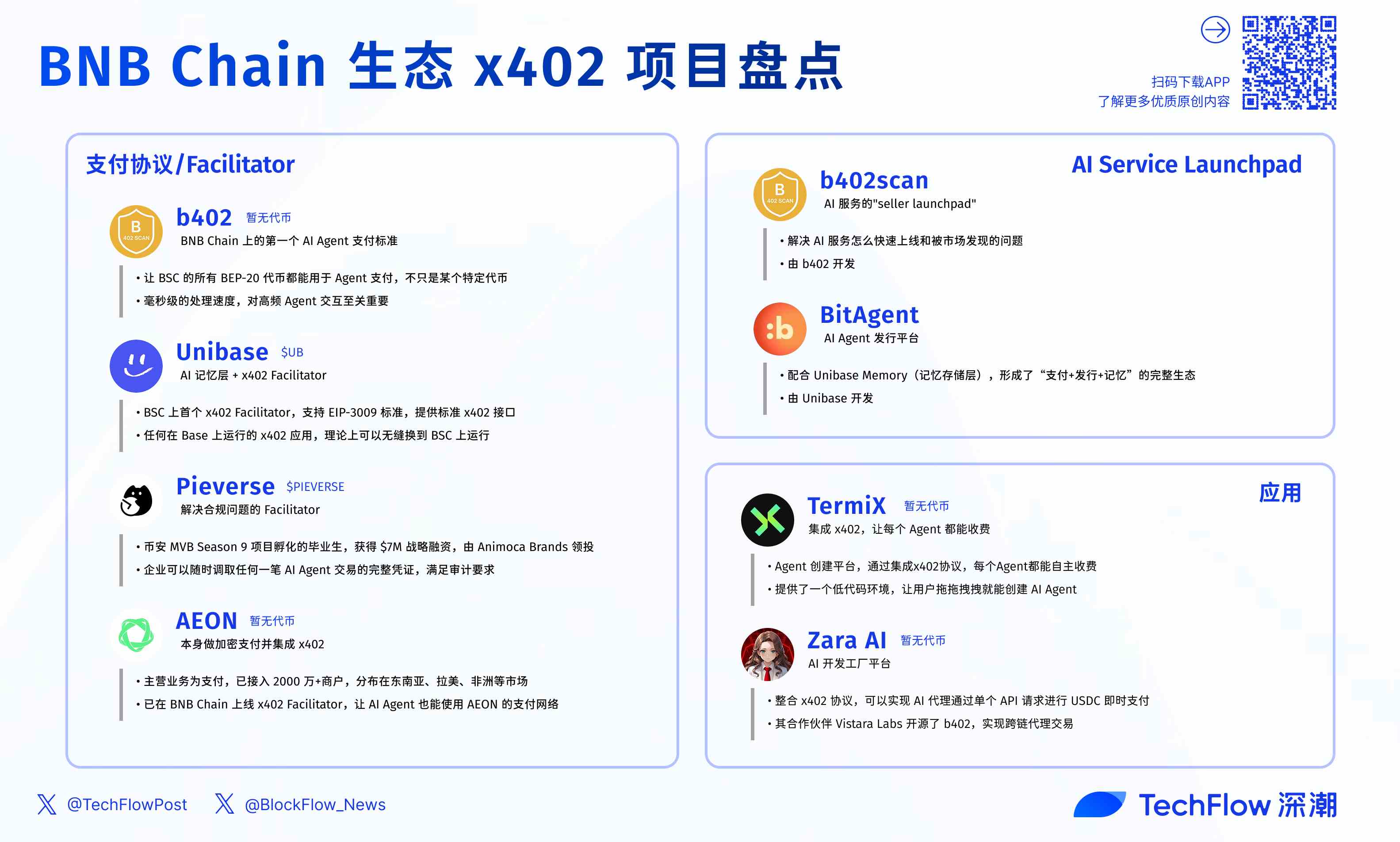
b402, Payment Protocol Standard (No Token Available Yet)
Looking at the on-chain data of x402 now, you can see that almost all the facilitators are on Base and Solana.
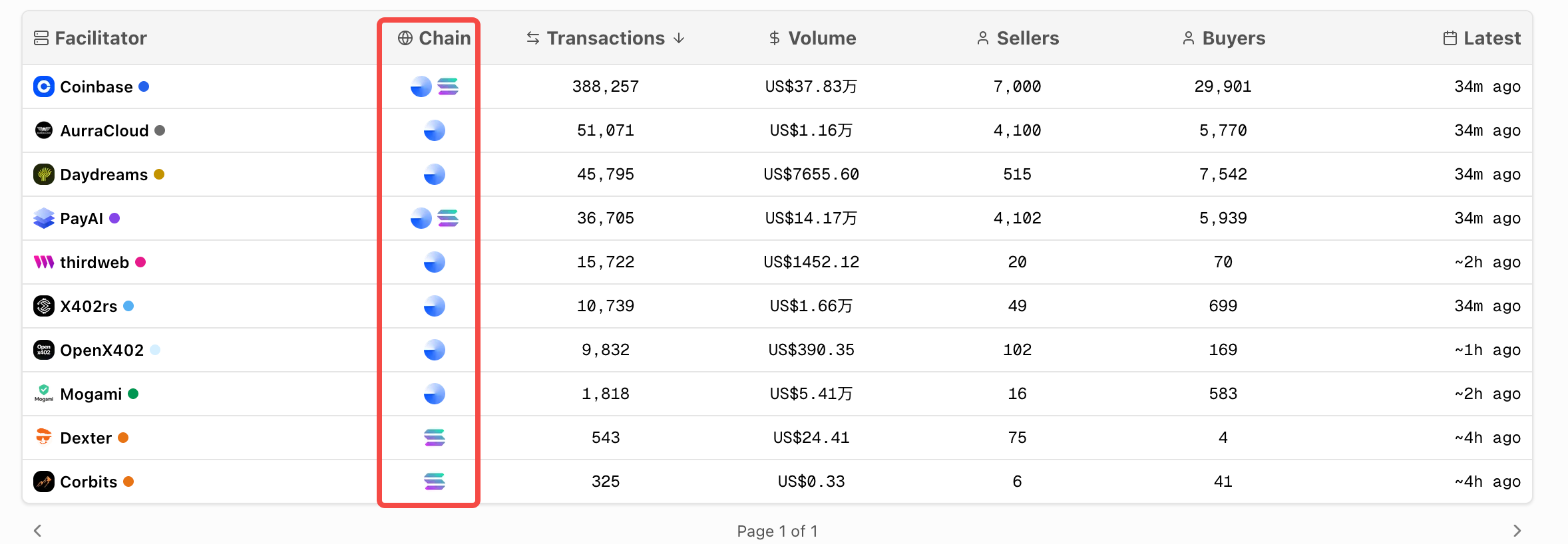
If you don't know what a Facilitator is, a simple explanation is:
The payment processing center within the x402 ecosystem is responsible for verifying AI's payment requests and processing on-chain settlements. Without it, an agent's payment request cannot become an actual on-chain transaction.
What does this mean? If an AI Agent on BSC wants to charge fees, it either needs to cross-chain to Base or build its own payment system from scratch.
Of all the infrastructure that BSC might need, the payment layer is the most critical. Without payments, there is no economic activity; without economic activity, agents are just toys.
This is what b402 is doing: the first AI Agent payment standard on the BNB Chain .
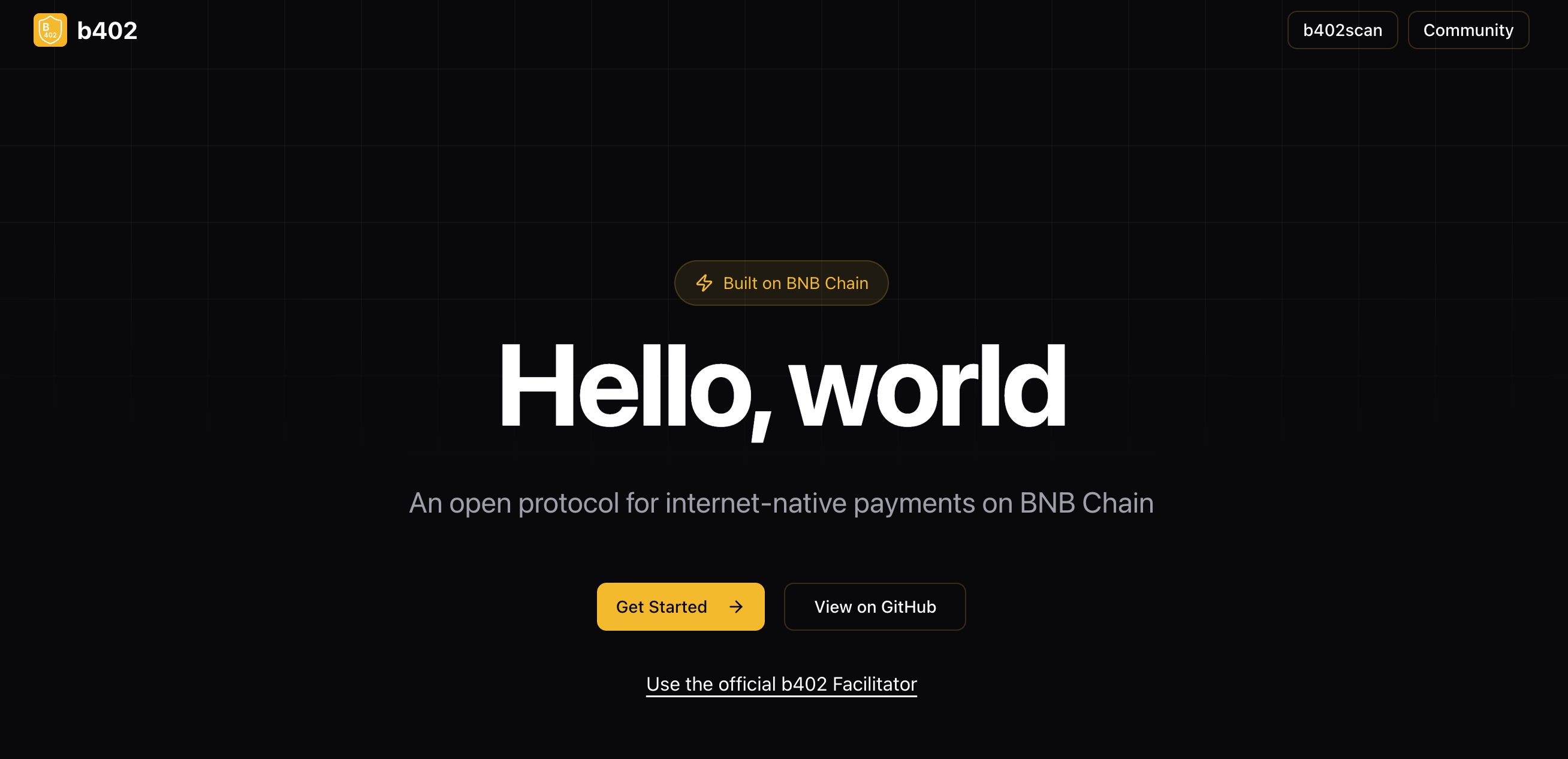
Simply put, the b402 brings the full capabilities of the x402 to the BSC, but uses a different technical approach.
Because BSC tokens (such as USDT) do not support EIP-3009, which is a standard that allows tokens to support "gas payment on behalf of others." With it, users can sign an authorization, and then someone else (such as a service provider) will pay the gas fees for them to complete the transfer.
Why does BSC's USDT not work if it doesn't have this feature?
Imagine an AI agent needs to pay to call an API. On Base, it simply signs an authorization, and the x402 facilitator will pay the gas fees for it. But on BSC, USDT doesn't have EIP-3009, so the agent must hold BNB itself to pay the gas fees.
Therefore, B402 implemented the above functions through a series of mechanisms, allowing users to make payments simply by signing their names, without needing to hold BNB to pay for gas.
A close examination of the B402 documentation reveals that it primarily addresses three issues:
This allows all BSC BEP-20 tokens to be used for agent payments, not just a specific token.
By integrating ERC-8004, agent authentication and payment can be completed within the same system;
Millisecond-level processing speed is crucial for high-frequency agent interactions.
Even more ambitious is the fact that the B402 is not content with simply being a protocol. A look at its architecture diagram makes this clear:
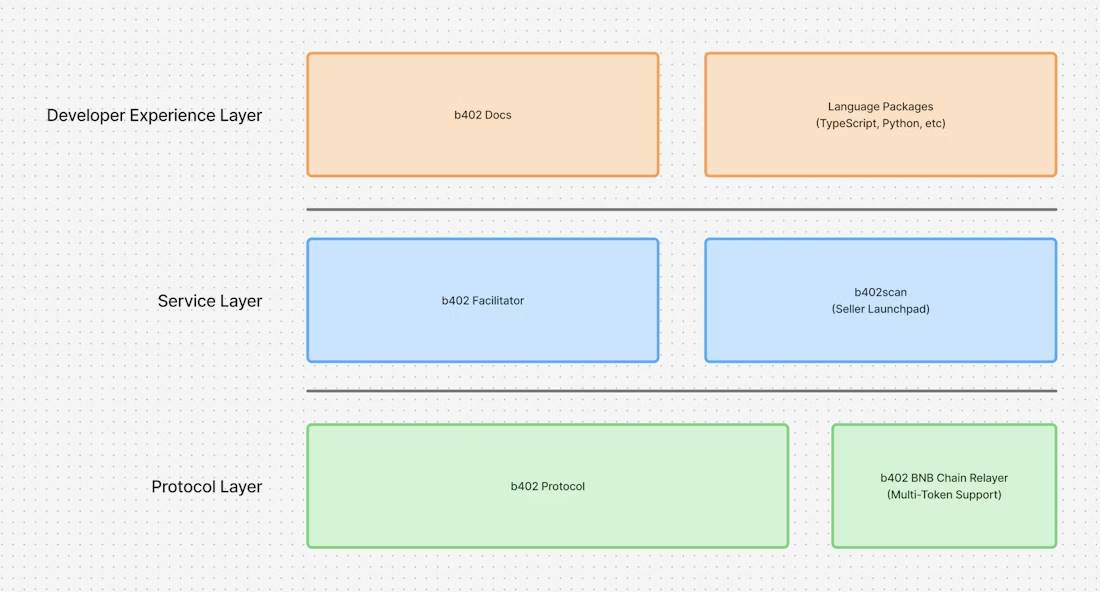
The bottom layer is the protocol (smart contract), the middle layer is the service layer (Facilitator and b402scan), and the top layer is the developer tools (SDK).
Among them, b402scan is particularly noteworthy. It is not a simple block explorer similar to x402scan, but an AI service "seller launchpad", more like an encrypted version of Alibaba and Shopify.
To put it simply, b402scan aims to solve the problem of how to quickly deploy and market-discover AI services. Let's say you have a weather data API and want to charge an AI agent for using it.
In the traditional model, you need to build your own payment system, process on-chain transactions, and find ways to make yourself known. But with b402scan, you only need a few steps: upload your API information, set the price, and deploy it on the chain.
The remaining payment verification, on-chain settlement, and curation are all handled by b402.
This is somewhat similar to the early days of Taobao. Before Taobao, individuals who wanted to open an online store had to handle payment, logistics, and advertising themselves. Taobao provided a one-stop platform, making it easy for anyone to open an online store.
For AI service providers on the BNB Chain, b402scan serves this purpose. Buyers who need to purchase services can directly explore the available services on b402scan.
Unibase, AI Memory Layer + x402 Facilitator ($UB)
Unibase does something different from B402. B402 is a payment protocol redesigned for BSC (because BSC's tokens do not support EIP-3009), while Unibase simply ported Coinbase's x402 protocol to BSC.
According to its official website x402.unibase.com, Unibase is "the first x402 Facilitator on BSC", supports the EIP-3009 standard, and provides standard x402 interfaces such as verify and settle.
Instead of forcing BSC's USDT to support x402, it created XUSD, a wrapped stablecoin specifically designed for x402 and supporting EIP-3009. Users can wrap USDC into XUSD at a 1:1 ratio and exchange it back after use.

In theory, any x402 application running on Unibase can be switched to BSC by simply changing the Facilitator address and token address (USDC → XUSD) on Unibase, without changing the code logic at all.
In addition to Facilitator, Unibase has also developed a BitAgent platform that allows developers to quickly deploy AI Agents. Combined with Unibase Memory (a memory storage layer), this forms a complete ecosystem of "payment + deployment + memory." It's somewhat like a mini version of the Base AI ecosystem replicated on BSC.
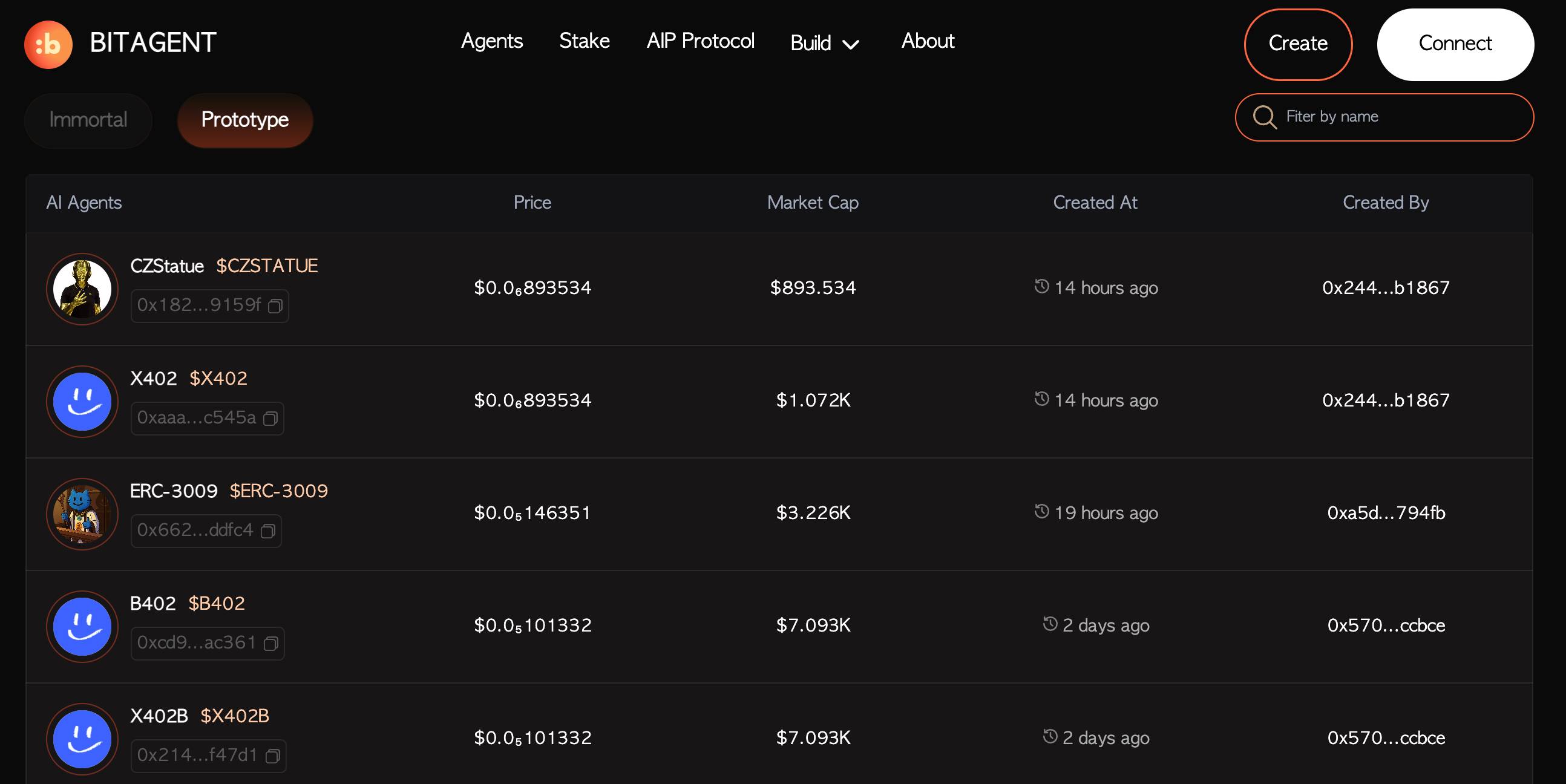
Pieverse, the facilitator for solving compliance issues ($PIEVERSE, Pre-TGE event is underway)
The biggest headache for traditional enterprises using AI agents is probably not the technology, but financial compliance. Every payment requires an invoice, audit documentation, and compliance with local tax laws.
The original x402 protocol did not take these into account, but Pieverse's x402b does.
Pieverse's Facilitator automatically generates "jurisdiction-compliant receipts" each time a payment is settled and permanently stores them on BNB Greenfield (BSC's decentralized storage layer).
This means that companies can access complete documentation for any AI Agent transaction at any time to meet audit requirements.
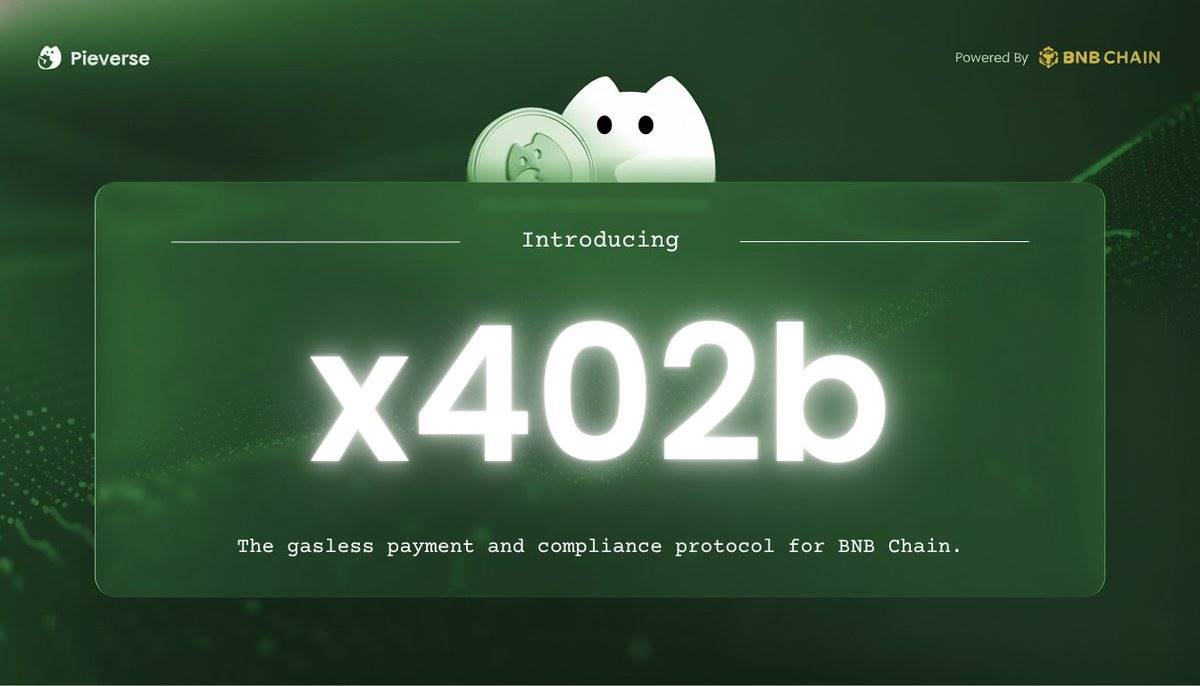
From an investment perspective, if you believe the enterprise-level AI agent market is poised for explosive growth, Pieverse might be an interesting target. Pieverse was previously a graduate of Binance's MVB Season 9 project incubation program, securing $7 million in strategic funding led by Animoca Brands.
Currently, Pieverse is also running a Pre-TGE event on Binance Wallet. Participation in this event requires 15 points, and you also need to complete various tasks such as following, forwarding, and using the app to get an airdrop opportunity.
AEON is a cryptocurrency payment platform that integrates x402 (currently without a token).
AEON is a larger AI payment framework, and x402 is just one of the protocols it integrates.
What AEON is really doing is connecting cryptocurrency with real-world payments. According to their data, AEON has already connected with over 20 million merchants, mainly located in emerging markets such as Southeast Asia, Latin America, and Africa.
On October 27, AEON launched the x402 Facilitator on BNB Chain, which allows AI Agents to use AEON's payment network.
AEON's advantage lies in being the winner of BNB Chain MVB Season 10, standing out from over 500 projects. More importantly, it has already discussed partnerships with Visa and Mastercard and plans to enter the North American and European markets by 2025.
From an investment perspective, AEON is not just a pure x402 concept, but a combination of "AI + payment + real-world application".
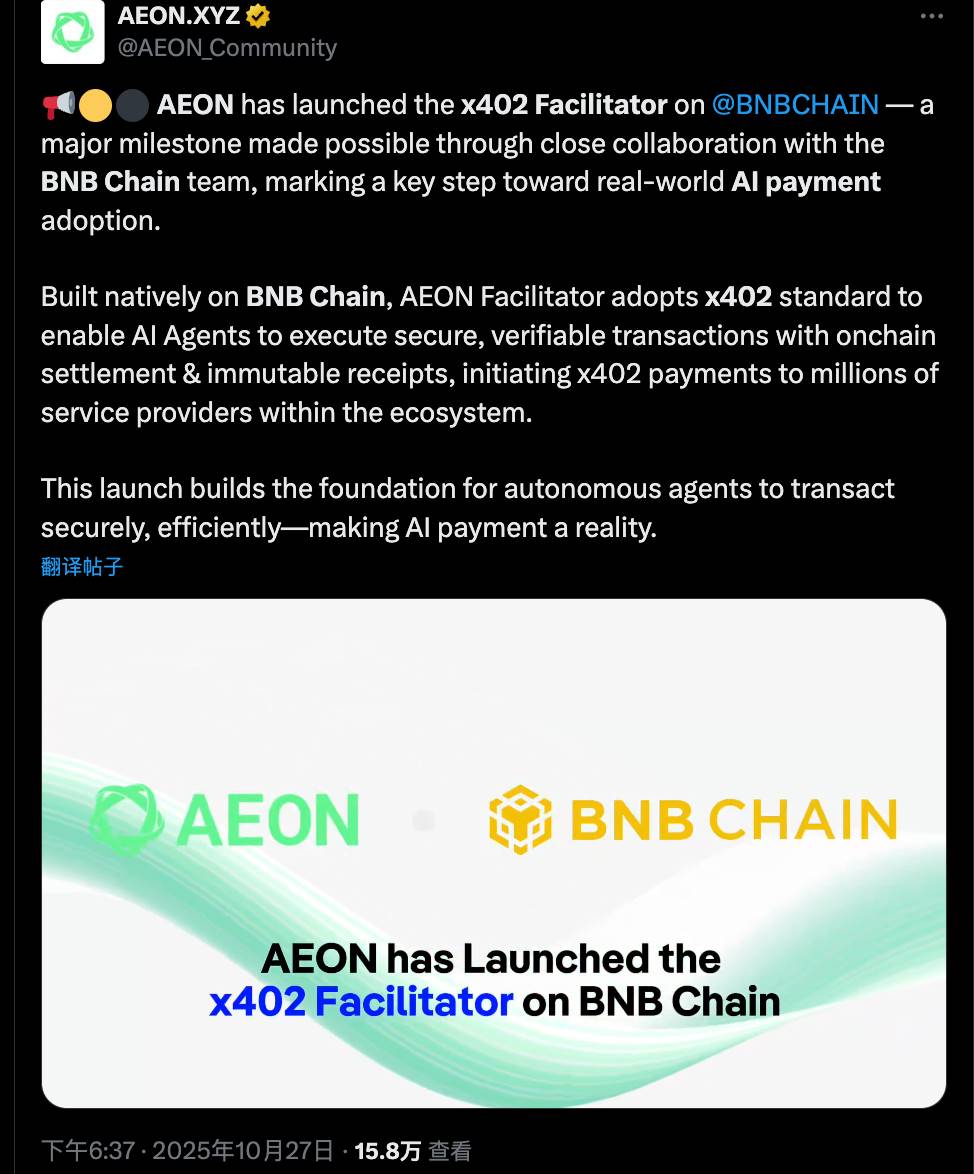
TermiX, integrated with x402, allows each agent to generate revenue (no token yet).
TermiX plays a unique role in BSC's x402 ecosystem: it is an agent creation platform, but the key is to enable these agents to charge through x402.
In short, TermiX provides a low-code environment that allows you to create AI Agents simply by dragging and dropping. But more importantly, these Agents come with built-in "cash register functionality": by integrating the x402 protocol, each Agent can independently collect payments.
For example, if you create an "on-chain data analytics agent," other users or agents will automatically trigger an x402 payment when they want to use its services. TermiX's SDK has already encapsulated the x402 payment process, so the creator does not need to understand the technical details of the payment; they only need to set the price.

A tweet on October 26th showcased their demo: tokens can be created through a simple conversation, and all on-chain operations involved in the process can be automatically paid for via x402. This means that agents on TermiX can not only charge fees, but also proactively pay for other services.
From the perspective of the BSC x402 ecosystem, if B402 and Unibase are the infrastructure, then TermiX is the application layer, which allows more agents to enter the market, and these agents are all potential users of x402.
Zara AI, an AI development platform (currently without a token).
Zara AI is an in-house AI development factory and agent platform that enables users to quickly build, test, deploy, and monetize AI-driven applications and agents in minutes.
According to publicly available information, Zara integrates the x402 protocol, enabling AI agents to make instant USDC payments through a single API request.
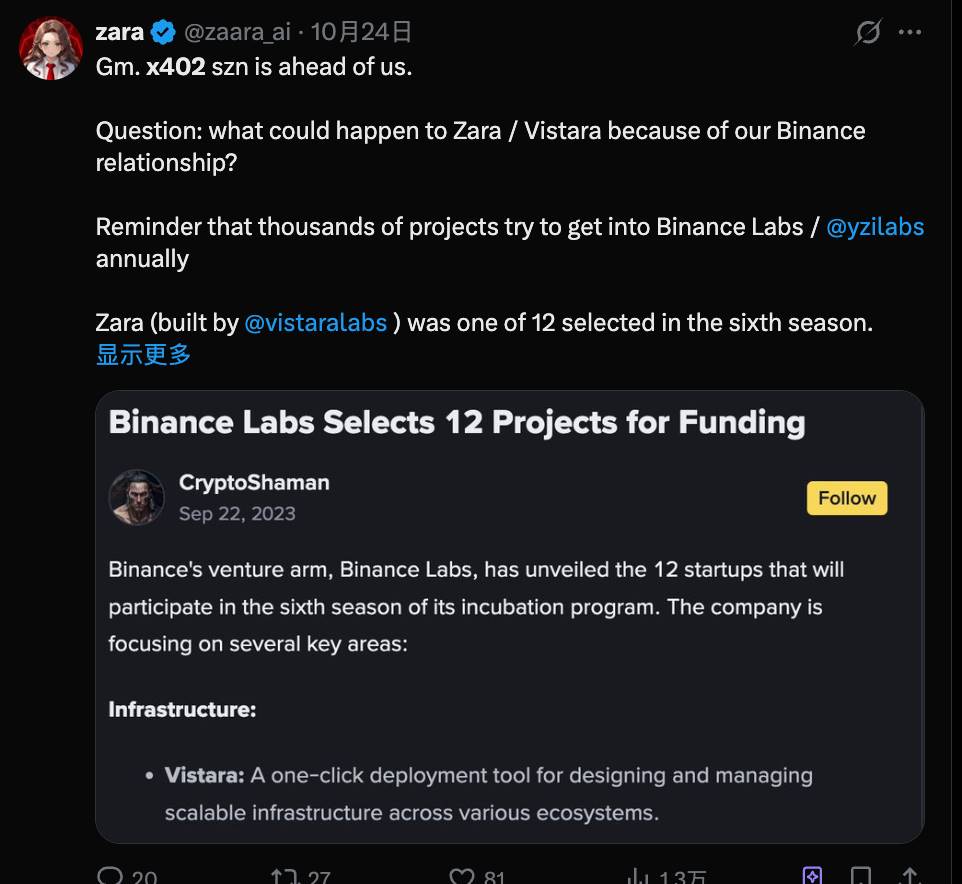
Agents can autonomously discover services, negotiate prices, and make payments via x402 at runtime, deploying dApps with built-in payment functionality on Solana, Base, and BNB Chain.
Its partner, Vistara Labs, has also open-sourced b402 (gas-free payments on the BNB Chain, mentioned earlier) to enable cross-chain proxy transactions.
Solana Ecosystem Project Review
First, PayAI Network, which has already seen a price increase, will not be discussed further here. As a core promoter of the Solana ecosystem x402, it currently also acts as a Facilitator, handling verification and settlement.
Besides memes, some more fundamental projects are being driven by Solana's official hackathons.
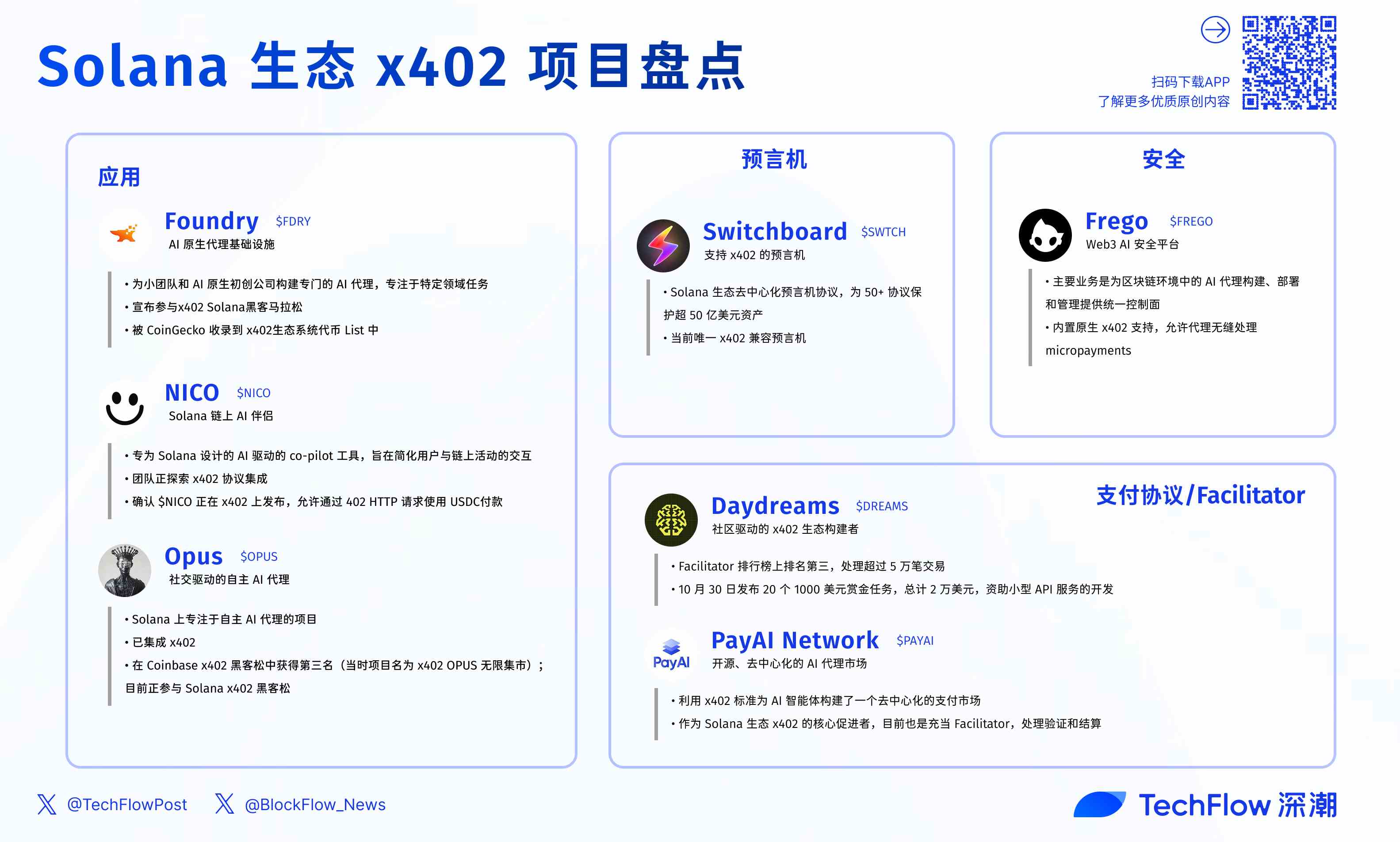
Solana launched its official x402 hackathon on October 28th, in partnership with Trends.fun, with a total prize pool of $50,000 across 5 tracks:
Best Untrusted Proxy, Best x402 API Integration, Best MCP Server, Best x402 Development Tool, Best x402 Proxy Application. The competition will run until November 11th, and the winners will be announced on November 17th.
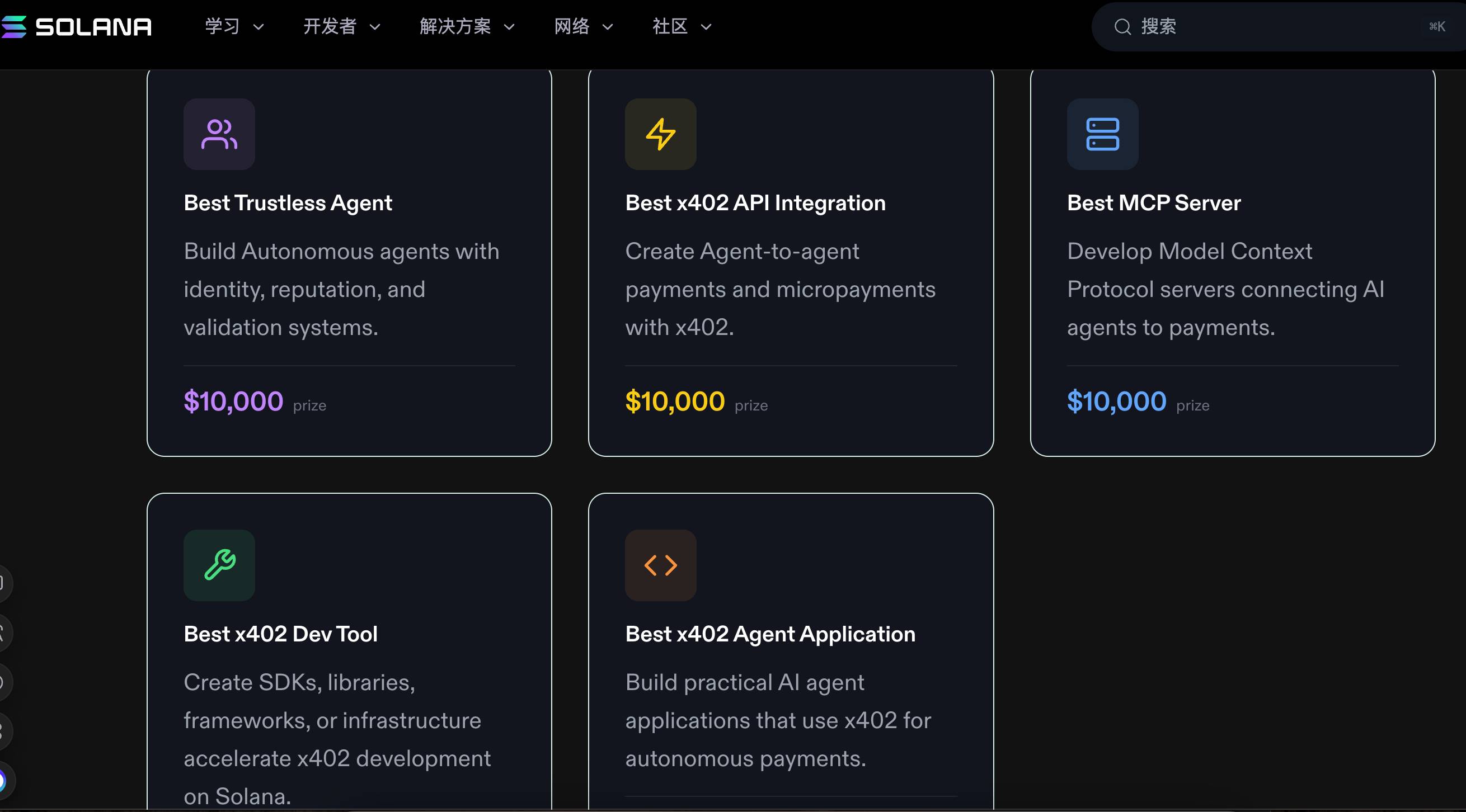
The themes of these competitions also reveal some popular or lacking areas surrounding the x402 within the Solana ecosystem:
Beforehand, AI verification/reputation assessment: How do I know who this AI is and what its reputation is before we make payments to each other?
In this process, the intermediary bridge: Similar to Payai, when AI pays the API, the payment crypto needs to be transferred to the blockchain by an intermediary.
The main focus is on AI: developing genuine AI applications that utilize x402, rather than simply using a meme like $PING.
As soon as the hackathon announcement was released, the comments section exploded with various projects from the Solana ecosystem responding positively.
Daydreams, community-driven x402 ecosystem builders ($DREAMS)
On x402's Facilitator leaderboard, Daydreams is currently ranked third, having processed over 50,000 transactions.
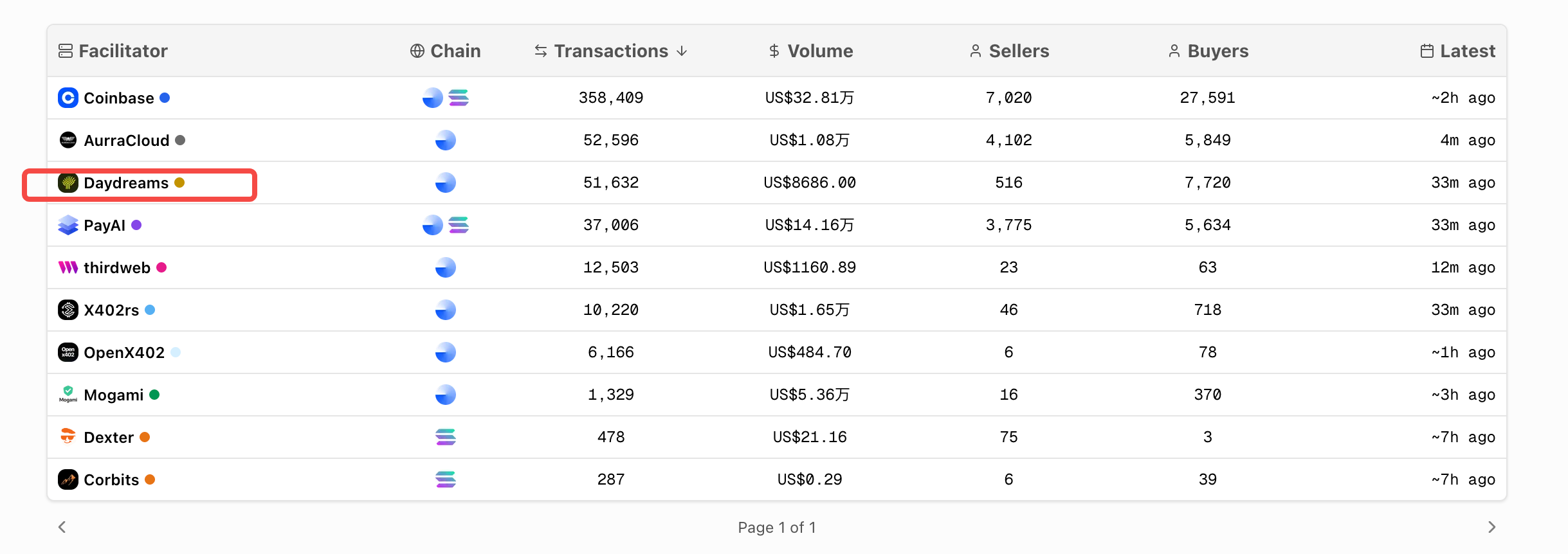
On October 30th, Daydreams announced an interesting initiative: launching 20 bounty missions, each worth $1,000, for a total of $20,000. Each bounty would fund the development of a small API service, charging via x402. They called these "Microbusinesses that can be built in a day."
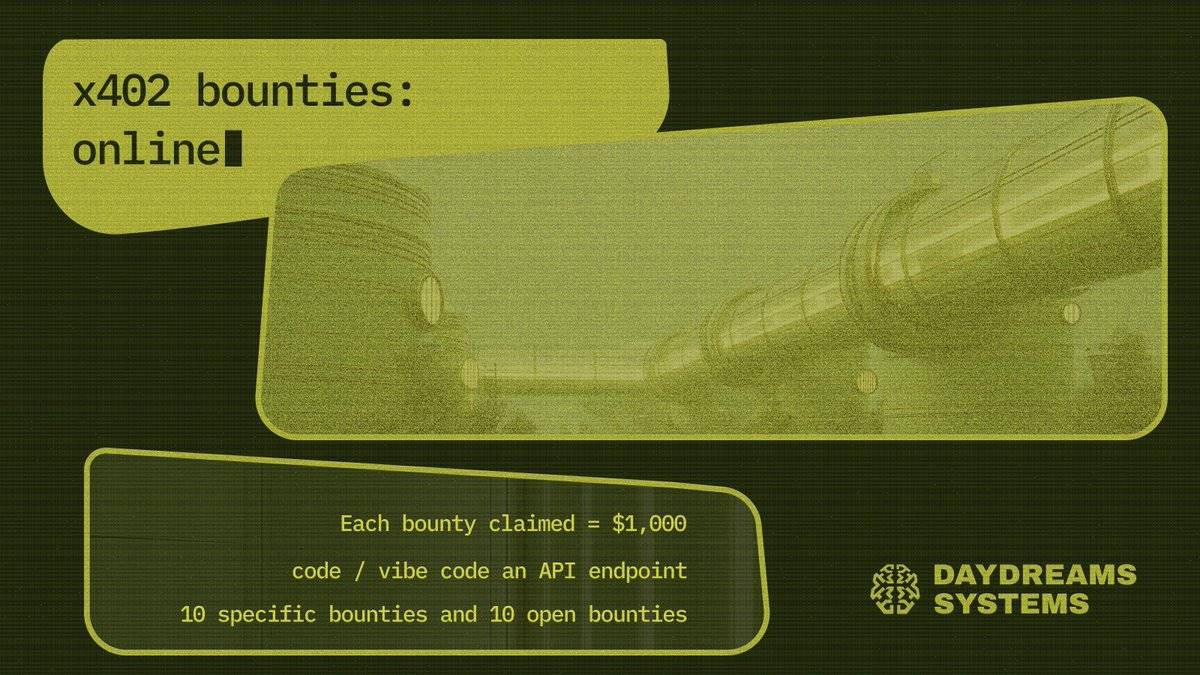
This model is clever. Instead of developing all the services yourself, you let the community build them. Each developer who receives a bounty creates a paid x402 API, which in turn attracts more AI agents to use and pay for it. Daydreams provides three core tools to support this ecosystem:
Daydreams Framework : A modular agent building framework that supports TypeScript and allows for rapid assembly of AI agents.
Daydreams Router : Enables agents to access various AI models such as GPT, Claude, and Groq, and allows for instant USDC settlement via x402.
LUCID platform (coming soon): Combining x402 and ERC-8004, enabling agents to have identity, payment capabilities, and independent operation.
Daydreams not only supports Solana, but also covers Base and Starknet, making it a true multi-chain facilitator.
Switchboard, supports x402 oracles ($SWTCH)
Switchboard is a decentralized oracle protocol in the Solana ecosystem. Its core products include Surge (real-time price streams with sub-100ms latency), Oracle Quotes (lockless on-chain integration), and a verifiable random number service, protecting over $5 billion in assets for more than 50 protocols.

On October 23, Switchboard achieved x402 compatibility through the Corbits SDK, becoming the "only x402 compatible oracle" at present.
This integration allows AI agents to pay for data queries on demand using SPL tokens (such as USDC), with each query costing less than $0.001.
Frego - Web3 AI Security Platform ($FREGO)
Frego's main business is providing a unified control plane for building, deploying, and managing AI agents in blockchain environments.
Core features include FregOS (Web3 AI agent operating system), real-time security guardrails, full observability, and automated compliance auditing.
FregOS has built-in native x402 support, allowing agents to seamlessly handle micropayments (such as cross-chain data or services paid via SPL tokens on Solana).
Features include transaction simulation for risk assessment, execution of strategies to prevent insecure payments, and one-click API integration for inter-agent business.
Frego's guardrail feature ensures that x402 transactions comply with security protocols, preventing unauthorized fund transfers and other vulnerabilities from being exploited.
Foundry, AI-native agent infrastructure ($FDRY)
Foundry builds specialized AI agents for small teams and AI-native startups, focusing on domain-specific tasks rather than general-purpose tools.
The product line includes generating professional video marketing content, programming AI agents, and a feature called Unbrowse, which allows AI agents to browse the internet faster.
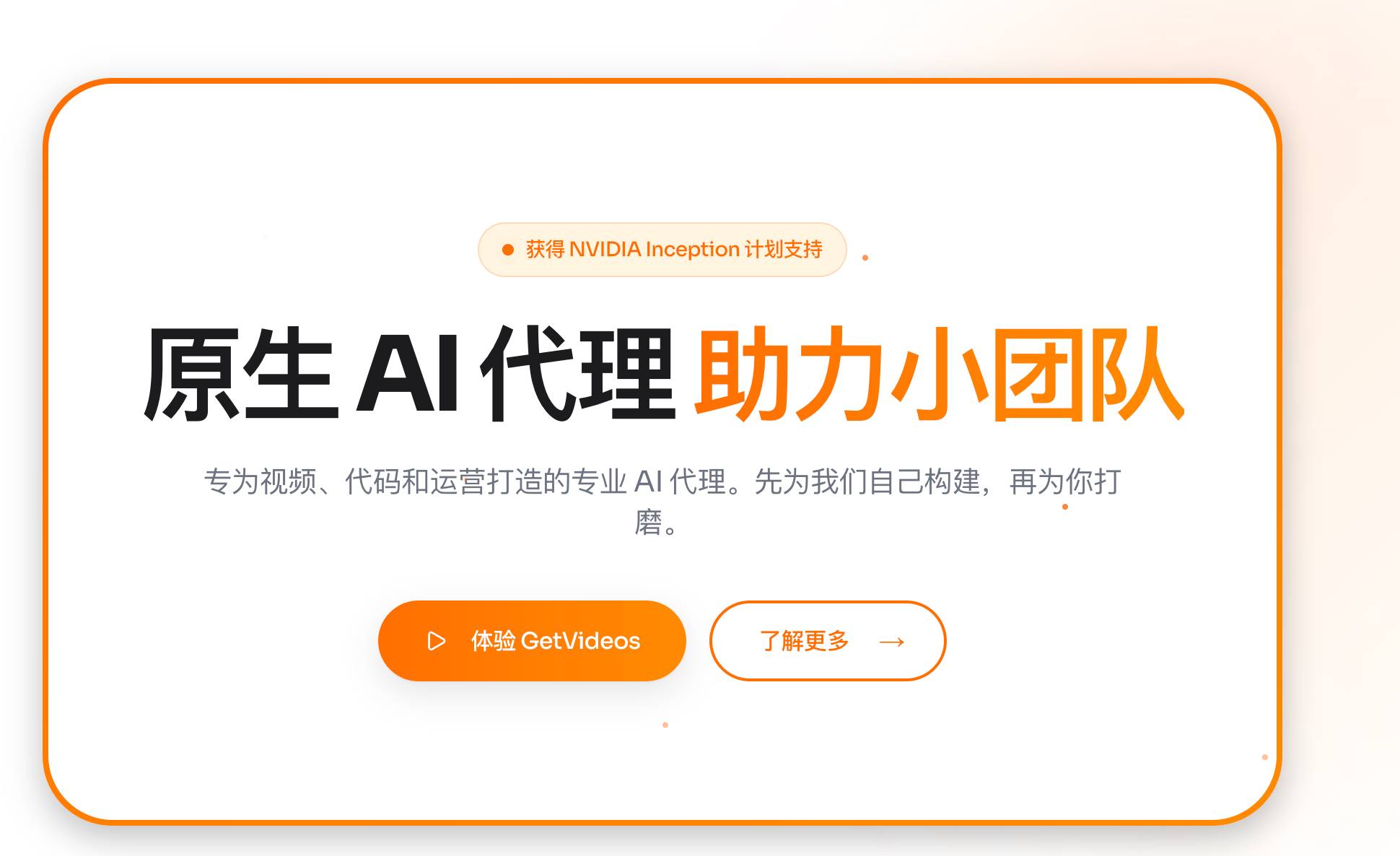
However, $FDRY has a small market capitalization and its price fluctuates wildly.
The recent catalyst is that Foundry integrated the x402 for autonomous network proxy payments, enabling real-time micro-payments at the network layer through Unbrowse.
On October 30, it announced its participation in the x402 Solana Hackathon, focusing on real-time AI settlement, and was also included in the x402 ecosystem token list by CoinGecko.
NICO, Solana's on-chain AI companion ($NICO)
Niconico.ai is an AI-driven co-pilot tool designed specifically for the Solana blockchain, aiming to simplify user interaction with on-chain activities.
Integrating DeepSeek (AI processing), Helius (Solana blockchain data), and Privy (wallet integration) APIs, users can get started with just an email address. Core features include trend analysis (identifying popular Solana tokens), token insights, on-chain execution, price prediction, and an upcoming sniping tool.
Similarly, the current market capitalization of NICO tokens is very low, and caution is advised.
The project team is exploring x402 protocol integration to enable USDC micropayments in the application. On October 28th, their tweet confirmed that "$NICO is launching on x402, allowing users to make payments with USDC via 402 HTTP requests."
Opus Genesis, a socially driven autonomous AI agent ($OPUS)
Opus Genesis is a project on Solana that focuses on autonomous AI agents, integrating blockchain with social networks to cultivate AI capable of autonomous operation.
Opus has already integrated x402, and the AI personality can use x402 to conduct inter-agent transactions, data queries, and some small business operations.
Specific applications include pay-per-use API calls ($0.001-$0.01 per request) and M2M (machine-to-machine) payments for trend analysis or community governance.
The project placed third in the Coinbase x402 Hackathon ("the project was then called x402 OPUS Infinite Marketplace") and is currently participating in the ongoing Solana x402 Hackathon.
Due to space limitations, not all x402 ecosystem projects on Solana are listed here.
However, these projects demonstrate the diversity of the Solana x402 ecosystem, ranging from oracle infrastructure to AI security, development frameworks, and autonomous agent platforms. We can look forward to the winning projects that will emerge after the hackathon.







